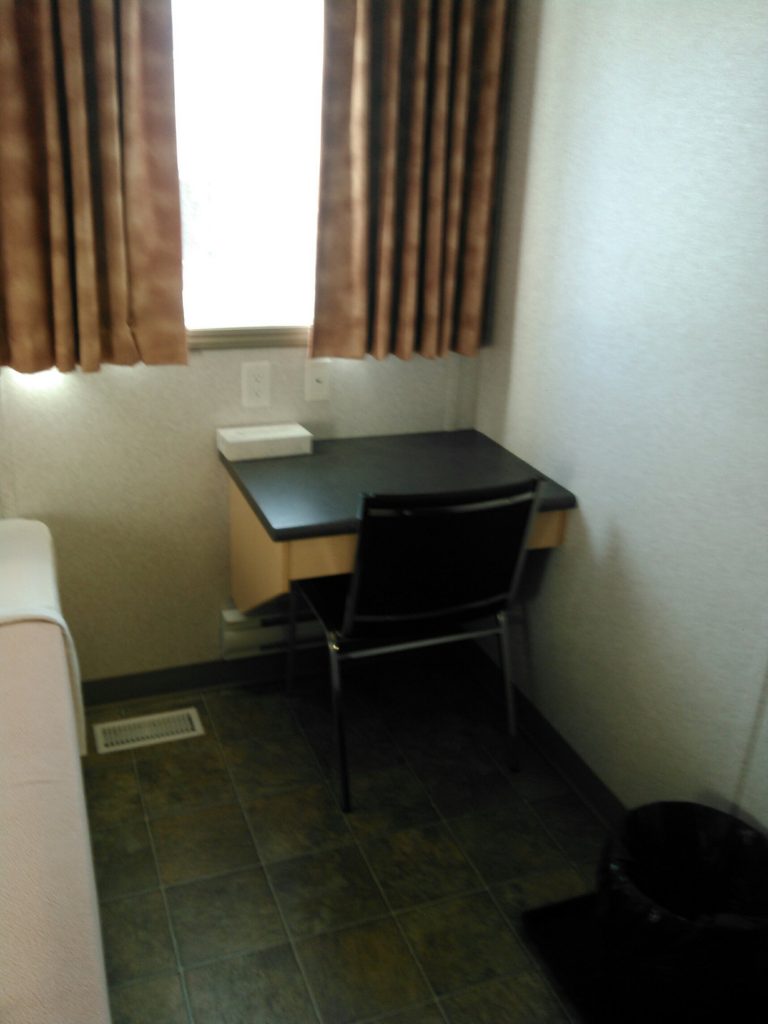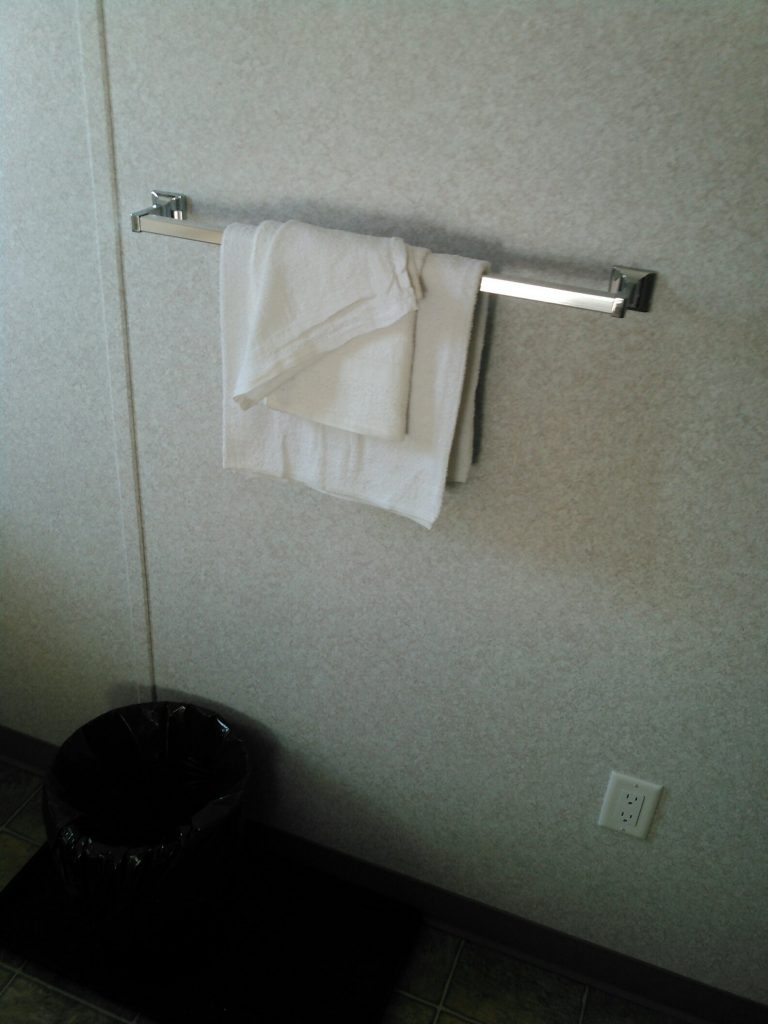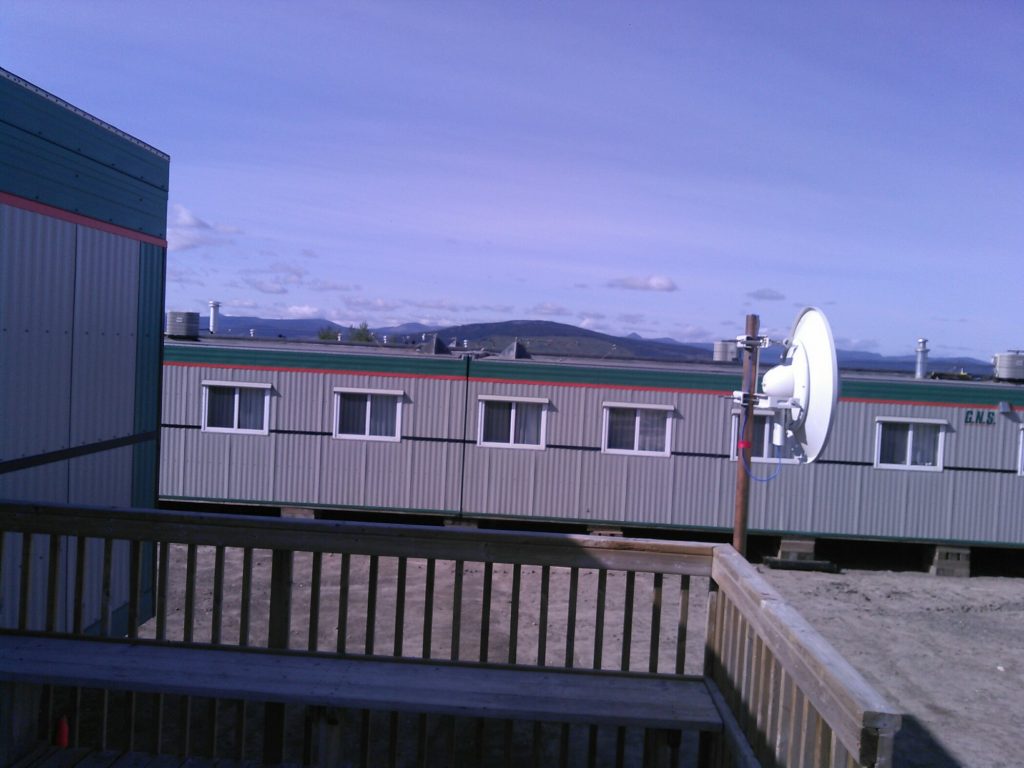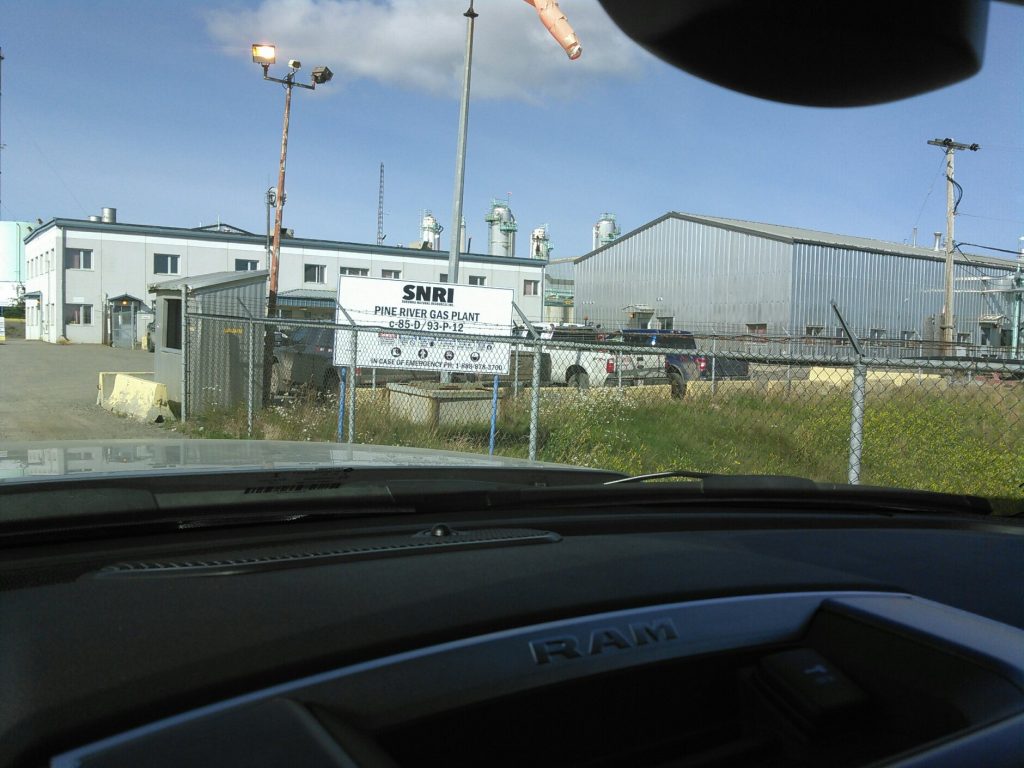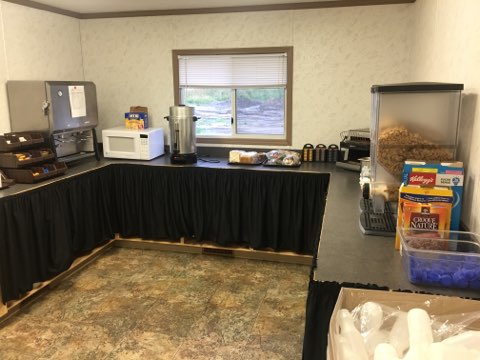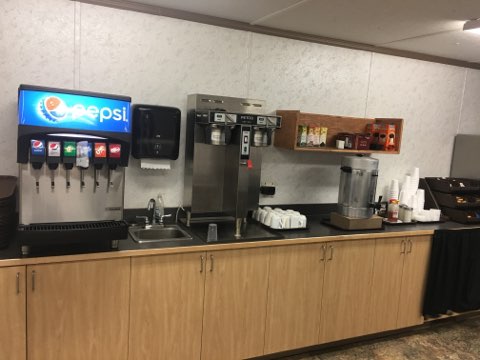IN THE MATTER OF THE LABOUR RELATIONS CODE OF BRITISH
COLUMBIA [RSBC 1996] c.244
AND
IN
THE MATTER OF AN ARBITRATION
BETWEEN:
CONSTRUCTION LABOUR RELATIONS ASSOCIATION
OF BRITISH COLUMBIA
(“CLRA”)
AND:
INTERNATIONAL UNION OF BRICKLAYERS AND
ALLIED CRAFTWORKERS (IUBAC) LOCAL #2 BC
(the
“Union”)
Wage
Reopener
Section
86 – LRB Case No. 73004/19R
ARBITRATOR: Dalton
L. Larson
COUNSEL FOR THE EMPLOYER: Ingrid
Otto
COUNSEL FOR THE UNION: Derrill Thompson
CASE CONFERENCE: June
25, 2019
PLACE OF HEARINGS: Written Submissions
DATES OF SUBMISSIONS: July
12, 2019
July
17, 2019
July
25, 2019
DATE OF AWARD: August
20, 2019
PRELIMINARY AWARD
1. Background
- This was a motion by CLRA to dismiss an application by
the Union under the May 01, 2016 to April 30, 2019 collective agreement for a
wage opener in circumstances where a new collective agreement had been
concluded between the Parties. The previous agreement had provided consistent
increases in the hourly rates on Schedule A1 Journeyperson classification rates
of $0.86/ hour in each of the first three years with a wage reopener effective
April 1, 2019. All other classifications were also recalculated consistently
with the percentage increases given to the Journeyperson classification.
- It will be most convenient if I quote the reopener
provision at this point because I will have many occasions to refer to it
subsequently in the course of making this award. The provision reads as follows:
3.104 Wage Re-Opener
The
wage re-opener referenced within Article 3.103(c) shall proceed as follows:
- The Parties shall meet no less than four (4) months
prior to the effective date of the wage re-opener. However, if the Parties are
unable to mutually agree on the outcome of the wage re-opener the matter shall be referred
to binding interest
arbitration.
- The Parties agree that Mr. Vince Ready shall be the
interest Arbitrator. However, in the event that Mr. Ready has retired or is not
healthy enough to perform the duties of the interest Arbitrator, the Parties
agree that Mr. Stan Lanyon shall be the interest Arbitrator.
- Notwithstanding any contrary interpretation of the
foregoing, the interest Arbitrator shall not have the right
to reduce the monetary package
of the Union.
- The outcome of the wage re-opener shall be determined
sufficiently prior to the effective date of the wage re-opener so as to allow
Employers to adjust payrolls in a timely manner.
- Article 3.103(c) prescribes an effective date for the
reopener of April 01, 2019. As I noted above, the agreement containing the
reopener had a term from May 1, 2016 to April 30, 2019. One may speculate about
the reason why the Parties negotiated such a tight timeline between the
reopener and the expiry of the agreement although it most certainly related to
sequencing the reopener with a new collective agreement. The negotiations for
the reopener were required to commence no later than 4 months prior to the
effective date, which means December 1, 2018 while negotiations for a new
collective agreement were required to start between 4 months prior to and no
later than 2 months immediately preceding the end of the term.
- On the evidence, the Union served a notice on CLRA to
commence negotiations for the wage reopener well before December 1. Geoff
Higginson, the President of the Union, sent an email to Greg Sewell, Vice
President of Labour Relations, at CLRA on August 3, 2018 saying that the Union
was prepared to meet as soon as possible for that purpose. Mr. Sewell replied
obligingly on the same day observing that the effective date of the reopener was April 1, 2019 which meant that the Parties would have to meet no later than December
- With this in mind, he acknowledged the notice and
agreed to a meeting with the Union prior to the prescribed date “for the
purpose of undertaking discussions relative to the wage reopeners.”
- Over the course of the following months, the Parties exchanged
correspondence on several occasions with a view to starting the negotiations on
the wage reopener but it did not happen. Moreover, as the negotiations for a
new collective agreement became more imminent, the inevitable happened. CLRA
suggested that it would be best if the reopener could be dealt with as part of
the upcoming collective agreement negotiations. It is unclear on the evidence
available to me whether the new position being taken by CLRA was influenced by
a change in negotiators, but I doubt it. Chris Mydske, Director, Labour
Relations, took over the responsibility for the negotiations from Greg Sewell.
On October 24, he confirmed that CLRA would prefer to address the wage opener
during trade level negotiations. In an email to Mr. Higginson, he asserted that
it was not logical to have discussions about a wage opener outside of
bargaining when the two issues clearly impact one another and expressed his
hope that the Union would agree to handling the issue in that fashion.
- In point of fact, the Parties did meet to discuss the
wage reopener shortly after the deadline set in Article 3.104(a), on December
3, 2018 and again on December 21. On the evidence, certainly in the latter
meeting the discussions were of a substantive nature relating, as they did, to
an offer that had been made earlier by CLRA which Mr. Higginson described as
“ridiculous”. The position taken by Mr. Mydske was that they would not be
offering an increase for 2019 but would consider taking monies from certain
other available benefits and putting it on wages. In any event, he expressed
the view that the Bricklayers were already doing well relative to the other
trades. Mr. Higginson replied that he felt that they were underpaid and that
they were prepared to take their chance with arbitration. At that point the
discussion moved to the issue which is the subject of this case as follows:
CM: I have my mandate. Not personal. Why are we doing a wage
reopener? We are going into bargaining.
GH: Our
guys are pissed with how far they have fallen behind in wages. CM: Agree to
disagree on wage opener. Probs have to pay Vince a visit.
There was
then some discussion about language in the agreement with the meeting breaking
off with Mr. Mydske saying, “Leave it to me”.
- The context of the reopener discussions was that
negotiations for a new collective agreement had already commenced and were well
under way. A Bargaining Protocol was signed on April 27, 2018 with the main
table subjects being agreed on July 3 and the threshold decision being made on
August 29. Actual bargaining commenced on September 10, 2018 with meeting no. 4
occurring on December 4. It is not surprising under the circumstances that the
primary effort of the Parties was largely directed to that purpose and not to
the reopener.
2.
Collective Agreement Negotiations in the
Construction Industry
- It is common ground between the Parties that their
bargaining relationship is mature. It goes back to 1978 where after an
extensive inquiry, the Labour Relations Board determined that the construction
industry would be best served by adopting a multi-trade format of collective
bargaining for building trade employers and unions engaged in institutional,
commercial and industrial construction. One might properly observe that such
organizations are anomalous because they constitute an exception to the normal
relationship between a single employer and a trade union which represents a
single group of employees. Where several unions and employers are aggregated
into representative organizations the members are not the employees but rather
are other organizations. In the case of a council of trade unions, the members are other trade unions while
the members of
an employer’s organization are the companies that employ the employees. This
has the effect of creating unique issues that are not involved in a typical
relationship arising out of the conflicting interests of the member
organizations. A council of trade unions will invariably experience
jurisdictional issues between the constituent members and the members of an
employer’s organization may be actual competitors or have dramatically
different business interests or circumstances.
- This is graphically illustrated in the relatively
recent decision of the Labour Relations Board: Re Construction Labour Relations
Assn. of British Columbia [2015] BCLRBD No. 109; BCLRB No. B34/2015 (“CLRA
B34/2015”). The problem that was central to that case stemmed from a practice
to negotiate issues that were of general
application to all the unions separately from local issues that were primarily
of concern to the separate unions. The more general issues are called main
table issues while the local issues are treated as trade level issues. No
ratification vote was taken even where the main table issues were settled in
order to permit the trades to conclude their individual agreements. What
happened then was that a practice developed where some individual unions
deliberately used the situation as a tactic to coerce improved wages and
benefits beyond what had already been agreed at the main table level.
- In fact, what the Board held is that the essential
purpose of certifying a council of trade unions under Section 41 of the Code
was to address such a problem. It acknowledged that once certified, while the
individual unions might be accorded a right to negotiate their trade
agreements, it is subject to the ultimate authority of the Council as the
exclusive bargaining agent to manage the negotiations to ensure that they are
done in good faith. It held that it was the duty of the Council to ensure that
mischief of that nature did not occur
- Interestingly, the Board recognized that the mere fact
that the trade issues are negotiated separately could be as much of a problem
for the unions as for the employers because once an agreement is reached on the
main table issues, they often found themselves unable to generate sufficient
pressure to resolve any outstanding trade level issues.
- In the end, the Board held that the solution to the
problem could best be addressed by an effective Industry Bargaining Protocol.
At paragraph 32 of the decision Ken Saunders in his capacity as Vice Chair held
that the protocol would have to include a mechanism to compel a timely
conclusion of coordinated trade table negotiations consistently with Section 41
objectives. Subsection (5) of that provision says that as part of the process
of the certification of councils of trade unions, the Board may make orders and
issue directions it considers necessary or advisable respecting the formation
of councils and the fair representation of the trade unions comprising the council.
- In the result Mr. Saunders ordered that the Parties
negotiate a protocol to govern each future round of bargaining sufficient to
meet their duty to bargain in good faith. At para. 42 he stated that at a
minimum such a protocol would have to contain the following elements:
- timelines for beginning, continuing and concluding bargaining,
including a mechanism for the timely conclusion of unresolved trade level agreements;
- a joint mediation/facilitation process to move bargaining toward resolution;
- a procedure governing agreements between CLR and
individual trades to implement terms of trade-level agreements before an
overall memorandum of settlement is concluded;
- the identification of main table industry issues and trade table
issues; and
- an expedited procedure to conclusively resolve disputes under the protocol.
- CLRA now takes the position that to give effect to the
wage reopener would be inconsistent with the essential purpose of establishing
the existing bargaining structure. Counsel argues that the Union should not be
permitted to take advantage of the reopener to improve the wages and working
conditions of its individual members under a previous collective agreement
where a new agreement has already been put into effect. More specifically, she
took the position that the Union’s application should be dismissed for the
following reasons:
- The Union’s application is moot. The CLRA and the
Bargaining Council of B.C. Building Trade Unions on behalf of its constituent
unions, including the Bricklayers have already concluded a collective agreement
which includes wages. There is no live issue to be determined. A new collective
agreement supersedes the former collective agreement under which the Union’s
application was brought;
- In the alternative, proceeding with this case would
constitute an abuse of process. The Parties agreed to a process to conclude a
collective agreement which included wage determinations. Wages for 201 9 have
been confirmed by the Labour Relations Board and the Union should not be
permitted to bring this application to seek out a new decision-maker to revisit
the same issue already determined by the Board; and
- In the further alternative,
the referral of the wage re-opener to arbitration is out of time.
3.
Industry Bargaining Protocol
- Following the mandate prescribed by the Board, the
first step undertaken by the Parties in this case to negotiate a new collective
agreement was to agree on a protocol by which the negotiations would be done.
The evidence does not establish how long it took but the agreement was signed
on April 27, 2018 which was several months before bargaining began on September
10. The prescribed objective was to reach an Overall Memorandum of Settlement
by April 30, 2019 which was the last day of the term of the collective
agreement then in effect. They agreed that they would commence, continue and
conclude bargaining based upon the specified
framework.
- It set out a procedure for determining the list of
subjects that would be bargained at the main table. This involved an exchange
of proposed subjects which would then be negotiated, with any disputes to be
decided by the Labour Relations Board. It provided that any subjects not
bargained at the main table could be bargained at the trade level.
- Notice to bargain was deemed by the protocol to have
been served on July 27, 2018. It established the specified commencement date
and that negotiations should conclude no later than January 31, 2019. A dispute
resolution process was implemented by which any substantive issues might be
settled if they were not successfully negotiated. This included selecting a
mediator and five possible arbitrators who could conduct an interest
arbitration for full and final settlement of both main table issues or trade
level agreements. Finally, it provided that the Labour Relations Board would
remain seized with disputes relating to the interpretation or application of
the Protocol.
- Except for timing, the Protocol appears to have been
successful. There were 19 official negotiation meetings, four of which occurred
in 2018. The last meeting was on May 28, 2019. As is normally the case, not all
of the issues were settled without controversy. Some issues required the
intervention of the Board. For example, the Parties
met with the Chair of the Board on January
21 regarding the bargaining process
and
whether
particular subjects were properly main table issues. The Chair established a
process of trade level meetings during the first two weeks of February to try
to move the process forward.
- One particularly sticky issue was that CLRA demanded
that a most favoured nations clause be removed from all the agreements that
included it. It even became a subject of a mediation. During the month of March
the parties held trade level bargaining for each of the 49 TLMOAs. During this
process 39 TLMOAs were signed which resulted in 9 of the 15 Unions being
completed. On April 16 a hearing was held at the Labour Relations Board. The
Chair issued an order the next day requiring more trade level discussions and a
return to main table negotiations on May 6.
- All of the negotiations from that point on were
conducted with a mediator. On May 28 the parties exchanged proposals, but no
resolution was reached. Accordingly, the mediator asked that their best and
final offers be provided to him by the close of business the next day. On May
31 a hearing was held at the Labour Relations Board where the mediator, David
Schaub, presented his written recommendations for settlement. Without getting
into the substantive issues, he concluded his report by saying that in his view
the parties had two options if they did not accept his recommendations:
- they could submit their best and final offer for
settlement to an arbitrator who would make a decision based on Final Offer
Selection; or
- the Chair of the Labour Relations Board could order
his recommendations into effect as amendments to the 2016-2019 collective
agreement and thus conclude collective bargaining.
- The Parties accepted the second option. The Chair of
the Board made the order with the result that a new collective agreement was
adopted at that point. The term of the new agreement extended from the expiry
of the previous agreement effective from May 1, 2019 for four years expiring on
April 30, 2023.
- The mediator’s recommendations included a monetary
package that was not retroactive to the effective date of the agreement. He
proposed that any wage increases should be effective two weeks following
ratification and thereafter on May 1 in each of 2020, 2021, and 2022 allocated
to the various grouping of trades. Pages 8 – 9 of his report structures the
various trades into five groups with each group being allocated a different
wage increase. The Brick Industrial were allocated to Group #2 and Bricklayer
CI, Terrazzo, and Tilesetters were allocated to Group #4.
- It is of critical importance to the issue relating to
the viability of the wage reopener that the mediator specified the following
condition on the implementation of the new wage schedule:
The
following terms shall apply to each Agreement within each group above. Each
trade shall receive an increase to their monetary package for their
Journeyperson (or equivalent) classification and all other indexes should
remain. For any trade that received an
increase in April 2019 that increase shall be deducted from the increases
outlined as follows (Emphasis added).
- On June 3, 2019 the Labour Relations Board issued a
written order confirming the oral decision of the Chair on May 31 that the
recommendations be adopted and put into effect. Accordingly, she ordered that collective
bargaining under the 2019 Bargaining Protocol was concluded and that the
constituent member trade unions of the Council must immediately advise
signatory contractors of their decision on the allocation of monetary increases
in order to avoid delays in implementation.
- Based on those facts, I shall deal with each of the
issues raised by Counsel for CLRA but in the inverse order that they were raised.
4.
Is the Issue Out of Time?
- The allegation that the matter is out of time is
premised on a requirement in Article 3.104(d) of the previous collective
agreement that the outcome of the wage reopener should be determined
sufficiently prior to the effective date so as to allow Employers to adjust
their payrolls in a timely manner. The effective date of the reopener is
expressly stated in Article 3.103(c) to be April 1, 2019.
- In point of fact, there are two time limits, of sorts,
in the reopener. The first is found in subparagraph (a) which purports to
require that the Parties meet no less than 4 months prior to the effective date
of the reopener and the second one, which is contained in subparagraph (d)
requires that the matter be determined prior to the effective date.
- The first time limit is not the subject of this
motion. It requires the cooperation of both Parties either of whom could
frustrate compliance. Accordingly, it is not compellable and, in any event it
was effectively met. The Parties communicated with each other several times, as
early as August 3, 2018 and agreed that they were under an obligation to meet
prior to December 1. Mr. Mydske and Mr. Higginson met in person on December 3
to discuss the wage reopener. A couple of weeks later the meetings were
expanded. On December 21, Mr. Mydske and Sascha Swartz from CLRA met with Mr.
Higginson and Sharon Edwards of the Bricklayers at which time they engaged in
substantive negotiations about the matter which I will discuss in more detail
later in this award. It is true that in neither case did the Parties come to an
agreement on the outcome of the reopener but that is primarily because CLRA
took the position from an early date that no purpose would be served by
separate negotiations. Mr. Mydske took the view that the reopener should be
dealt with as part of the negotiations for a new collective agreement and not
in a separate discrete process.
- One may properly note that by that time the
negotiations for a new collective agreement were well under way. By the end of
February they had already had 10 meetings. In fact, on February 28 the Parties
met at the Labour Relations Board with the mediator who suggested a trade level
process to try and conclude all trade bargaining and to develop some momentum
to get the main table discussions moving forward. As I observed above, the
Parties held trade level negotiations during much of the month and succeeded in
signing off 39 MOAs, the point being that the individual trades were the
primary focus of the negotiations at that time.
- Contemporaneously with the negotiations, Geoff
Higginson wrote to Mr. Mydske on four separate occasions to persuade him to
agree to activate the reopener, with the first being on March 1. However, on
each occasion, he was rebuffed by Mr. Mydske who continued to take the same
position as he had done in December, that it was something that more
appropriately should be dealt with in the negotiations. In fact, on March 20
when the dispute was coming to a head Mr. Higginson even made a proposal to Mr.
Mydske on the amount of wage increase he was looking for under the reopener.
More precisely, he advised CLRA that the Union was proposing an increase of
$4/hour to the straight time hourly journeyperson commercial institutional
rates for the lower mainland and $3 outside the lower mainland effective April
1, 2019. Mr. Mydske immediately replied by saying that CLRA was not interested
in offering any increases and effectively invited him to refer the matter to
arbitration, saying that there was a process available to resolve it if he
wasn’t happy with CLRA’s position.
- The very next day the invitation was taken up by
Counsel for the Union to refer the matter to arbitration. I do not intend to
review the evidence on the efforts that were then made to find an arbitrator
who was available to hold hearings on the reopener prior to the effective date,
which by then was mere days away. The only point to be made is that at no time in that process did CLRA take the position
the matter was
not arbitrable
until these hearings. On that basis alone, I would be prepared to hold that if
any of the time limits set out in Article 3.104 of the 2016-2019 collective
agreement might be construed as legally binding, they were waived by CLRA.
- Even if the requirement in Article 3.104(d) to
determine the wage reopener before the effective date is a time limit, I find
that compliance with it is intended to be directory and not mandatory. The
language of that provision does not
purport to prescribe a consequence of a failure to comply with the time limit
on the principles discussed by Arbitrator Hope in Re Board of School Trustees of School District No. 39 (Vancouver) and
Vancouver Teachers Federation [1995] 48 LAC (4th) 108. In Re Coast Mountain Bus Co. and Canadian Auto
Workers Local 111 [2004] 129 LAC (4th) 333 Arbitrator Chertkow
preferred a broader test, whether the time limit is sufficiently forceful that
one could conclude that it was intended to be
mandatory.
- Neither of the time limits in the reopener meets those
tests. While subparagraph (a) prescribes a specific amount of time for the
parties to meet, it is clearly intended more as a goal to initiate negotiations
rather than a narrow limitation that if not met would preclude any further
access to the reopener. Moreover, the requirement to refer it to arbitration
does not prescribe an additional time limit after the point at which the
Parties are unable to agree on the outcome of the wage opener. There is no consequence
prescribed for a breach of the time limit.
- The limit in subparagraph (d) is even less forceful.
No evidence was submitted on how much time might reasonably be required to
allow employers to adjust their payrolls but more importantly, it could not be
seen to be a matter of great consequence upon default because wage increases
can invariably be adjusted retroactively. While the word “shall” might be taken
to indicate a degree of compellability, the language of the clause generally is
passive and does not indicate an intention to make it mandatory.
- Where there are no mandatory time limits, a question
of delay is a matter within the discretion of the arbitrator to decide in all
the circumstances taking into account any explanation for the delay and whether
the other party has been prejudiced by the delay. In every such case evidence
is required to establish that the delay was unreasonable: Re Emergency Health Services Commission and Canadian Union of Public
Employees, Local 873 [1996] 61 LAC (4th) 15 (Black).
- In any event, in the circumstances I would exercise my
jurisdiction under Section 89(d) of the Labour Code to relieve against the
breaches of the time limits set out in the collective agreement because the
failure of the parties to meet to negotiate the reopener was due entirely to
the position of principle taken by CLRA. I accept that It did not refuse to
meet but rather proposed to deal with it in the negotiations. It is true that
the time limit in Article 3.104(d) goes beyond regulating the negotiations
between the Parties and extends to a requirement to “determine” the wage
reopener, which would include arbitration. In this case, however, although CLRA
made its position known to the Union that it wanted to deal with it in the
negotiations it was expressed only as a preference and did then not make a
proposal to that effect in the negotiations. On March 20 the Union made a
proposal for a specified increase to which Mr. Mydske replied in no uncertain
terms that they were not interested in offering any increases under the wage
reopener. When the Union continued to press CLRA to meet he stated simply that
he didn’t think there was any reason to discuss things and that there was a
process in the agreement to resolve the issue if it was not happy with their
position. Until then both Parties must be seen to bear responsibility for the
amount of time spent in negotiations. At that point Mr. Mydske must be taken to
have declared an impasse, essentially rejecting any further responsibility for
negotiating the reopener. It was then entirely the responsibility of the Union
to secure a determination of the
reopener through the only other means available which was to refer it to
arbitration which is what Mr. Thompson did the very next day. In no sense,
could that be seen to be undue delay.
- Taking all of the above into account, I find that the
reference to arbitration is not out of time. Nor do I consider it appropriate
to adjourn the proceedings sine die as Counsel suggested I should do, as I did
in Comox Valley School District No. 71
and Comox District Teachers’ Association (Kaljur Grievance) [2009] BCCAAA
No. 88.
- In the Comox Valley School Case the employee, a
teacher, had grieved that the employer violated her professional autonomy and
the collective agreement by requiring parental consent prior to students
obtaining counseling. In the course of referring the matter to arbitration, the
employer advised me that it had rescinded the discipline that had been taken
against the teacher and was in the process of amending the Student Services
Department Operations Manual to reflect a balanced approach concerning the
issue of parental consent which would take into account factors such as the
Board’s duties and responsibilities, the services provided by the counselors,
the age and maturity of the students and the best interests of the students. I
considered that if the manual were to prescribe an appropriate test for when
counselors could properly provide services to students without parental consent
that was acceptable to both parties, the matter would be rendered moot and
would not require a decision from me.
- It is not clear to me how referring the matter back to
the Parties would work under the circumstances where a new collective agreement has already
been concluded. There is no mechanism under that agreement for dealing with the issue.
Consequently, I refuse to adjourn the proceedings on that ground.
5.
Abuse of Process
- CLRA submits that it would be an abuse of process to
allow this matter to proceed to interest arbitration. Counsel argues that the
Parties agreed to a process to conclude a new collective agreement, which
included a wage determination for 2019 and that it would be unfair to be
subjected to a different process that could potentially undo it.
- The principle was exhaustively elaborated by the
Supreme Court of Canada in Toronto (City)
v. Canadian Union of Public Employees (CUPE) Local 79 [2003] SCJ No. 64
where a recreation instructor was dismissed after being convicted of sexual
assault. The matter was upheld on appeal and when it was referred to
arbitration the arbitrator held that the dismissal was without cause. The issue
was then reviewed by the courts as to whether the union was entitled to
relitigate an issue that had been decided against the employee in criminal proceedings.
- In that instance, the decision of the arbitrator was
overturned because, as the Court held, it tended to bring the justice system
into disrepute. Arbour J. adopted the explanation of Doherty J.A. in the Court
of Appeal that a reasonable observer would not be able to understand how on the
one hand the grievor could be found by a court to have been properly convicted
of sexually assaulting the complainant and be deserving of 15 months in jail
and on the other hand subsequently be found in a separate proceeding by an
arbitrator not to have committed the sexual assault and to be deserving of
reinstatement in a job which would place young persons like the complainant
under his charge.
- Ms. Otto also refers to a more recent decision in this
Province where the principle was adopted by Arbitrator Hall. In Her Majesty the Queen in Right of the
Province of British Columbia as Represented by Ministry of Child and Family
Development and British Columbia Government and Service Employees Union
(Preliminary Ruling on Abuse of Process), unreported June 6, 2017 the
grievor had been suspended, and then terminated partly based on an allegation
that he had been involved in an altercation with a particular individual in a
parking lot. The altercation led the grievor to initiate a civil lawsuit in the
Small Claims court against the individual. The question then arose whether
the judgment could be admitted
into evidence at
arbitration to
establish the facts to justify the discipline. Following the City of Toronto
case, the arbitrator refused to admit it into evidence on the basis that it
would be an abuse of process to relitigate the incident in circumstances where
he would effectively be acting as a court of appeal in the matter.
- Applying the principle in this case, Counsel for CLRA
takes two positions in the matter. Firstly, she says that the Bricklayers are
attempting to reopen the issue of wages for 2019 notwithstanding that it has
been conclusively settled by its statutory bargaining representative, the
Bargaining Council of British Columbia Building Trade Unions in the
negotiations for a new collective agreement. In effect, she says that a
decision under the reopener would overlap the new agreement and would not be
saved by the condition adopted by the Parties that calls for the deduction of
any pre-existent increases from the increases granted in the new agreement.
Secondly, she argues that the new collective agreement precludes any further
consideration of the reopener because when the Parties agreed to a new wage
schedule for 2019, it had the effect of extinguishing the reopener.
- On the first point a whole answer lies in the
acceptance of it. If the result of the reopener were to undo the new collective
agreement it would invalidate the reopener because I have no jurisdiction to
alter or change it. However, whether it has that effect is really a problem for
consideration in the arbitration. We do not need to consider it in these
proceedings because it is conceded by the Union that the new agreement is not
subject to change through the reopener. Nor is it disputed that I do not have
any jurisdiction under that agreement.
- I agree with Counsel that it is an established principle
of law that an arbitration board has no jurisdiction beyond the collective
agreement under which the board is constituted. That principle was adopted in
the leading case of Goodyear Canada Inc.
and URW Local 232 [1980] 28 LAC (2d) 196 (M. Picher) where a number of
employees were not paid premium pay under three consecutive collective
agreements. The arbitrator held that he had no jurisdiction beyond the
agreement under which he had been appointed and that any redress available
generally excludes any period before the grievance is brought.
- Counsel for the Union asserts that the Union does not
seek to change the results of the bargaining for the 2019 – 2023 collective
agreement but rather, as he said, only seeks to put bones on the wage opener
that CLRA willingly entered into when they agreed to the 2016 – 2019 collective
agreement with the Union. He explained that when the previous agreement was
negotiated, the Parties chose not to prescribe a wage increase effective April
1, 2019 at that time but rather to wait to see what market conditions would
prevail at the time of the reopener and to leave the rate for that year to be
determined by arbitration. On the contrary, he contends that there would be an
abuse of process if the Union was denied the opportunity that was freely
negotiated to arbitrate the wage reopener. He takes the position that CLRA
repeatedly delayed the wage reopener process, which he described as laying in
the weeds, never once saying that they better get the reopener out of the way,
lest it disappear as a right.
- As for the second point, what CLRA says is that the
new collective agreement precludes consideration of the reopener because when
the parties agreed to a new wage schedule for 2019 it had the effect of
extinguishing the reopener. In other words, Ms. Otto says that the later
collective agreement replaced the earlier one that included the reopener which,
therefore, can no longer have any force or effect. She does not claim that
there was an express agreement to abrogate the reopener. Nor does she deny that
the Union refused all attempts by Mr. Mydske to consolidate the wage reopener
into the negotiations. In effect, what she says is that the abrogation is an
automatic result of reaching a new collective agreement and that it does not require
the express agreement of the Union to consolidate the two processes.
- As authority for her proposition Ms. Otto cites the
decision of Arbitrator Germaine in British
Columbia Nurses’ Union and Canadian Office and Professional Employees Union,
Local 378 (Vacation Entitlement Grievance) [2011] BCCAAA No. 78 where
several grievances were filed challenging the employer’s calculation of
vacation entitlement. The employer argued that the matter had been resolved by
an earlier settlement on the same issue. The arbitrator agreed with the
employer saying that there was no basis for the union to repudiate the prior
settlement and that the union was bound by the
resolution.
- This is not really that kind of case. However, there
is direct authority for the proposition that she advocates that when a new
agreement comes into effect and alters existing terms and conditions of
employment, generally speaking the terms of the old agreement are extinguished:
Canadian Labour Arbitration: Brown &
Beatty (4th) @ para 4:1610 p. 4-30. In fact, in Ontario Section 55 of the Labour Relations Act 1995 provides:
There shall be
only one collective agreement at a time between a trade union or council of
trade unions and an employer or employers’ organization with respect to the
employees in the bargaining unit defined in the collective agreement.
- Nonetheless, the general rule is the subject of many
exceptions. In particular, it has been
held that a new collective agreement does not extinguish vested rights: Re Crown Cork & Seal Canada Inc. and
Metallurgistesd Unis D’Amerique Local 9222 [1997] 67 LAC (4th)
429 (Frumkin) where the arbitrator held that a retired employee covered by a
pension plan had a vested right that survived the expiry of the collective
agreement. It is also an issue that was most recently considered in this
Province in British Columbia Public
School Employers Association and BCTF (Soleway) [2015] 259 LAC (4th)
36. In that case, Arbitrator Lanyon similarly acknowledged that when a new
agreement comes into effect, the terms of the old agreement are generally
extinguished, but he said that it could not be the case where rights are vested
or the parties otherwise agree. He held, in that case, that the achievement of
a higher educational standing by the grievor was an enforceable vested right
but that her claim for 22 years of retroactivity was out of time.
- Accordingly, I find that to engage the interest
arbitration under the provisions of Article 3.104 of the 2016-2019 collective
agreement would not constitute an abuse of process where a new collective
agreement has been concluded unless and until it is clearly demonstrated that
it necessarily cannot be implemented without changing the new agreement. The
reopener is a vested right that was intended to have force and effect beyond
the end of the term of the agreement. Nor was the right abrogated by the wage
schedule in the new agreement. The fact is that the reopener was implicitly
continued in force and effect by making any increases subject to a set off
against the wage schedule in the new agreement, the subject to which I now
turn.
6.
Mootness
- The argument under this head is somewhat of a
modification of the claims made above except that it postulates that there is
no real issue to be decided and that it would effectively be a waste of
valuable time and resources to proceed under the circumstances. This concept
addresses the most fundamental element in arbitral jurisprudent that there must
be a dispute of some nature to be decided. The dispute may be one of fact or
one of law in which case the arbitrator is compellable and may not decline
jurisdiction. For that principle Ms. Otto refers to the decision of the Supreme
Court of Canada in Joseph Borowski v.
Attorney General of Canada and Interfaith Coalition on the Rights and Wellbeing
of Women and Children, R.E.A.L. Women of Canada and Women’s Legal Education and
Action Fund (LEAF)) [1989] 1 SCR 342. Her argument is somewhat different
from the above, not that the right to arbitrate has been extinguished by the new
collective
agreement but rather that the prior agreement under which the dispute occurred
no longer exists and for that reason there is no live issue to be determined.
- In Borowski the appellant challenged the validity of
Section 251(4), (5) and (6) of the Criminal Code relating to abortion on the
grounds that they contravened the life and security and the equality rights of
the foetus as a person, protected by Sections 7 and 15 of the Canadian Charter
of Rights and Freedoms. In the course of the legal process, the Ontario Court
of Appeal concluded, inter alia, that neither Section 7 nor Section 15 of the
Charter applied to a foetus. Shortly, thereafter, however, all of Section 251
was struck down by the Supreme Court of Canada in R. v. Morgentaler (No. 2) [1988]
1 SCR 30.
- As a consequence of Section 251 being struck down, an
issue arose whether the dispute had been rendered moot such that the Court
should exercise its discretion not to hear it, a proposition which it accepted.
It held that the doctrine of mootness is part of a general policy that a court
may decline to hear a case which raises merely a hypothetical or abstract
question and will not have the effect of resolving some controversy affecting
or potentially affecting the rights of the parties.
- The Borowski case did not involve an issue of labour
relations but the principle has been applied in this context. In Re LaFarge Canada Inc. and International
Brotherhood of Boilermakers Local Lodge Number D385 [2011] 215 LAC (4th)
132 Arbitrator Somjen was faced with a similar claim where some employees had
refused to handle cargo from a limestone quarry when there was a strike in
progress. Eventually the strike was
settled and there were no further refusals to handle the limestone.
Nevertheless, the employer filed a policy grievance requesting an
interpretation of the hot cargo clause under the collective agreement seeking a
commitment from the union that its interpretation was correct. However, the
union would not agree as a result of which it was referred to arbitration where
the union took the position that the grievance was moot because the labour
dispute ceased to exist and there was no further refusal to work.
- Arbitrator Somjen held that the approach mandated by
the Court involves a two step analysis. First it is necessary to determine
whether there is an actual dispute that has disappeared such that the issues
have become academic. If there continues to be is an actual dispute of some
nature it cannot be moot by definition
and it is not necessary to go to the next step. Second, if the response to the
first question is affirmative, it is necessary to decide whether the
arbitration board should exercise its discretion to hear the case. Whether the
discretion should be exercised then involves the application if three separate criteria:
- whether there is a continuing adversarial context;
- a concern for conserving scarce judicial resources, and
- the need for the board to demonstrate a measure of
awareness of its proper function and that making decisions in the absence of a
dispute might be viewed as intruding into the role of the legislature.
- The analysis done by the arbitrator is interesting
because firstly, he found that even though the matter was academic in the sense
that there was not a continuing refusal to work, there was an important continuing adversarial context
raised by the policy grievance. Secondly, he held that the concern for judicial
economy is less of a factor in labour arbitration because the parties choose
and pay for the arbitrator. Finally, he said that while the third criterion
applies with equal force in arbitrations, it should be translated to this
proposition:
….. the parties create their own collective agreement within
certain statutory limitations (for example, the prohibition on strikes and
lockouts during the term of the collective agreement).
Arbitrators
should be careful not to intrude unnecessarily into the collective bargaining
process by interpreting language in an existing collective agreement where
there is no live dispute.
- I adopt his analysis on those points, but it is also
important that he observed that there is another factor that is unique to
labour arbitration that was not considered in Borowski which involves policy
grievances. These are intended to permit the parties to refer issues of
interpretation to arbitration either expressly or by necessary implication,
which in a purely judicial context might be considered to be academic. He
agreed with what I said on the issue in the Comox School Case at paragraph 30
that such matters cannot be considered to be moot because it would be adverse to
the intention of that parties:
What one must be
careful to factor into the equation, however, is that some collective
agreements make express provision for policy grievances, which are arguably
moot by definition because they typically raise issues of principle or
interpretation and do not provide any specific remedy to an individual grievor.
Some agreements tend to deal with that problem by restricting policy grievances
to those that could not be the subject of an individual grievance. More
normally, however, the approach is more inclusive. A policy grievance is
regarded as simply one of more general application and does not depend on
whether is could be brought by one individual or several. See the discussion of
the differences between the two approaches in Canadian Labour Arbitration,
Brown & Beatty (4th ed) @ p.2-91 fn.2. Of course, where the
collective agreement expressly contemplates grievances that are of an
interpretive nature or whether the remedy may be declarative only or
prospective, it is difficult to see how
the doctrine of mootness could be properly applied to preclude arbitrability of
the very thing that it is designed to permit.
- Even apart from specific language in a collective
agreement authorizing policy grievances, Section 84(2) of the Code requires
that every collective agreement must contain language which gives arbitration
boards a wide range of jurisdiction that goes well beyond merely determining
whether something happened and extends to “its interpretation, application,
operation or alleged violation, including a question as to whether a matter is
arbitrable.” The jurisdiction to interpret the terms of a collective agreement
is at the head of the list. Interpretive issues are accorded equal importance
to those involving the application, operation or violation of the agreement.
Accordingly, in labour relations terms, the fact that a dispute involves an
issue of interpretation may not render it moot under the Borowski prescription,
unless the interpretation does not comprise the real substance of the issue in dispute.
- The interest arbitration that is prescribed by the
reopener in the 2016 – 2019 collective agreement is similarly a device that is
unique to labour relations. It permits an arbitrator to do something that is
unheard of in the realm of commercial contracts, which is to actually amend or
change the terms of an existing contract. In the context referred to by the
Court in Borowski, the parties have effectively given the arbitrator a
legislative function that will automatically intrude into the collective
bargaining process. Indeed, it goes a step further than the interpretive
jurisdiction inherent in a policy grievance which Arbitrator Somjen said should
be exercised with great care. In the case of an interest arbitration the intrusion
is automatic and necessarily dramatic. However, what is important to understand
in the context of this case is that the right to amend only extends to the
collective agreement under which the reopener
arises.
- CLRA takes the position that there is no dispute that
is capable of being litigated under the reopener because it must be taken to
have been extinguished under the principle enunciated in UAW Local 112 and De Havilland Aircraft of Canada Ltd. [1950] 2 LAC
465. In that case, the arbitration board held simply that a new collective
agreement negotiated by the parties had the effect of extinguishing the terms
and conditions of the previous one. As the arbitration board held at paragraph
13, “It is our view, that the whole theory of
collective
bargaining demands that the current collective agreement is to contain and
represent the whole agreement between the parties
- The problem with that case is that over the years
following the decision it became obvious that an exception to the general rule
must be recognized in circumstances where it is clear that the parties clearly
intend that certain benefits will continue into succeeding agreements, many of
which are described in the authorities cited by Ms. Otto. These exceptions have
been recognized as part of the natural development of the arbitral
jurisprudence relating to such things as retroactivity, vested rights and other
benefits that are purposefully intended to have force and effect well after the
collective agreements under which they are negotiated expire.
- That is the nature of the reopener. It was not
intended to be extinguished under the terms of the new collective agreement. It
is true that the Parties expected that the reopener would have been determined
by the time that the new successor agreement was put into place. Article
3.104(d) purports to require that the outcome be determined prior to the
effective date April 1, 1019 but as I discussed earlier, that cannot be seen to
be mandatory. In any event a date is typically prescribed to be effective where
the implementation of an agreement is not certain but the parties want it to be
applied retroactively in the event of a deviation. The word itself implies that
the specified date may not be met. No time limits were specified for the
arbitration. The Parties did not agree that it be extinguished. Nor did they
agree to consolidate it with negotiations relating to the new wage schedule. On
the contrary, it was purposefully extended by the parties by accepting the
condition specified by the mediator that any trade receiving an increase under
the reopener would be deducted from those prescribed in the new wage schedule.
- What Ms. Otto argues, however, is that even if one
accepts that the reopener remains effective, it could not have any practical
effect because it would necessarily be subject to the wage schedules negotiated
under the new agreement. This would be the logical effect from the fact that
the reopener was intended to precede the implementation of the new wage
schedules. Therefore, as she argues, any wage adjustments made under the
reopener would necessarily have to be deducted from any increases under the new
agreement. In addition, she suggests that it would also offend the rationale
prescribed by the Court in Borowski that one must be mindful of the importance
of preserving scarce judicial resources and the intrusion that reopener would
have on the new agreement.
- She postulates that the new agreement was negotiated
by the Bargaining Council of the British Columbia Building Trade Unions which
is the certified bargaining agent of all the trade unions who are members of
the Council, including the Bricklayers. It follows, she says, that the mischief
that certification was intended to prevent is precisely what is occurring here,
that despite the conclusion of collective bargaining, a member of the Council
is seeking to open up bargaining again on the issue of a wage re-opener under a
prior agreement that no longer exists
and notwithstanding that the wages for 2019 have already
been determined.
- While I accept the evidence that there has existed a
problem of individual unions impacting main table negotiations through trade
level demands, the practice to which Ms. Otto refers is one that related to
negotiations for new collective agreements. Because of the number of employers
and unions involved in bargaining, these same parties developed a practice of
negotiating main table issues, which treats wage schedules, separately from local
trade issues. What happened under that format was if an individual union felt
that it did not get enough at the main table, it would seek to obtain more
through the local bargaining structure. But that is not what happened here.
There is no evidence that the Union delayed the reopener in order to get
another kick at the can. If the intended sequence of implementation had
occurred in this instance, the reopener
would have been settled before the conclusion of the new collective agreement. It is
pure
happenstance that we are now faced with dealing with the wage reopener after
the new wage schedule has been put in place.
- Nevertheless, while I accept that such a new wage
schedule has been properly implemented, it does not follow that the reopener has
been extinguished and no longer exists. The reopener continues to have force
and effect as a vested right under the provisions of the previous agreement.
Most certainly, it poses serious problems of integrating it with the new wage
schedule under the circumstances except for the fact that the new agreement
expressly contemplated the situation, requiring that any increase under the
reopener will be deducted from what is provided in the new wage schedule.
- I do not accept that the condition was intended to apply
in the past tense even though that is strictly the grammatical sense of the
words used by the mediator. A proper interpretation of those words can only be
effected in the historical context in which they were used, which was that at
the time that the report was written, no trade had received an increase in
April 2019. It is inconceivable that the mediator would not have known that the
reopener had not been concluded when he wrote those words. It would have made
no sense in that context unless one interprets them to apply more generally to
any increases that may be obtained under the reopener at any time. In other
words, the condition must be interpreted to mean simply that any increase that
is determined under the reopener shall be deducted from the increases already
prescribed in the wage schedules of the new collective agreement.
- The term of the new agreement is May 1, 2019 to April
30, 2023. However, Article 3.103(c) of the old agreement, purports to require
that the reopener will be effective April 1, 2019 meaning that if an increase
is determined to be appropriate it arguably might be restricted to the first
month and after that date it would have to be deducted from the increases
negotiated under the new agreement. Mr. Thompson argued that if the arbitration
were to result in increases higher than those negotiated in the collective
agreement it is quite possible that over the term of the agreement the increase
would be absorbed leaving a positive balance at some point in the term. His
position is that the mere possibility that such a thing could happen
necessarily means that the issue is not moot.
- He postulates an example, the details of which I do
not intend discuss except to say that it would be premature for me to determine
how it would work at this point but at the very least it is graphic evidence of
an interpretive issue that remains in dispute quite apart from the substantive
issue of whether an increase is justified on the basis of the normal standards
and criteria applicable to interest arbitration disputes. The position taken by
CLRA is that it would be untenable that the Union would be able to obtain a
benefit greater than any other constituent union and achieve retroactive wages
increases that were not contemplated at the time the renewed collective
agreement was concluded. Ms. Otto says it is trite law that an important
promise (especially a financial benefit) must be clearly and unequivocally
expressed and that a referral under the reopener must be seen to be
inconsistent with the actions of the Council to enter into a new agreement
which provided for wage increases in the same
period.
- The problem with that argument is that CLRA is
asserting rights of the Council that it is not advocating for itself. No
evidence was made available to me that the Council opposed the efforts of the
Union to obtain benefits independently of its other constituent unions. Had it
taken that position, it was well within its powers to restrict it. The fact is
that the Council was a party to both the reopener and the new collective
agreement. Both were intended to have force and effect. Just because the new
collective agreement happened to be implemented prior to the reopener cannot
obviate its effectiveness as a vested right.
- Nor do I agree with the premise of the argument of
CLRA that the Union’s delay should not be rewarded. This particular argument is
based on the fact that the Union failed to refer the reopener to arbitration
immediately after the meeting on December 21, 2019 when Mr. Mydske confirmed
his position that the reopener should be dealt with as part of the negotiations
for a new collective agreement. The problem with the argument is that the
position that he took was expressed only as a preference. He did not
definitively refuse to negotiate under the reopener until he wrote to Mr.
Higginson on March 20, 2019 saying that he did not think there was any more
reason to discuss it. The very next day after that the Union referred it to
arbitration. In any event, the time limit under Article 3.104(a) cannot be
interpreted to be mandatory sufficient to preclude arbitration. In point of
fact, it can be read to apply only where the Parties are unable to agree on the
outcome and that did not occur until March 20. Had they entered into
negotiations which then failed, the matter might have been entirely different
but that is not what happened. CLRA refused to negotiate the reopener at all,
albeit that it was in an attempt to consolidate it with the negotiations for a
new collective agreement.
- The Union continued to attempt to negotiate the
reopener in a vain hope that CLRA would recant its position. When it finally
became clear that it was not going to happen it was referred to arbitration by
a mutual consensus reached by the Parties. On March 20, 2019 Mr. Mydske wrote a
short note to Mr. Higginson saying as follows:
Geoff. I know
you do not agree with our position. However, at this point I don’t think there
is any more reason to discuss things. We told you our reasons and it was
certainly not “just because” as you put it below. Regardless, there is a
process in the collective agreement to resolve the issue if you are not happy
with our position. Thanks.
- Two days later, on March 22 Mr. Thompson wrote to Mr.
Ready reciting subparagraph (b) of Article 3.104, saying that the Parties had
been unable to mutually agree on an outcome to the wage reopener and asking him
to schedule an arbitration in the matter. It is difficult to understand how
that could be seen to be an undue delay in the circumstances at that time and
in any event both Parties bear responsibility for it. No time limits are
specified in the reopener for when a dispute about it must be referred to
arbitration. After that, considerable difficulty was had by the Parties in
finding an available arbitrator which I will not attempt to review.
- Suffice it to say that following several attempts, an
application was made by the Union on May 2, 2019 to the Labour Relations Board
for the appointment of an arbitrator under Section 86 of the Labour Relations
Code. I was then appointed to determine the matter by letter dated June 17,
2019. It is true that the actual appointment was made after the nominal
expiration of the collective agreement on April 30 but the matter was referred
to arbitration well before that date. The only thing that remained outstanding
was the particular arbitrator who would hear the dispute.
- Even if I am wrong, the collective agreement was
continued under the terms of Article 2.200. It provides that once either party
serves a notice to bargain, the agreement shall continue in full force and
effect until the Union serves a notice to strike or the Employer gives a notice
of lockout or the Parties shall conclude a new
agreement.
7.
Conclusion
- In the result, the motion by CLRA to abrogate the
referral by the Union to arbitration is dismissed. However, prior to entering
upon the question, I choose to refer the matter back to the Parties for their
further consideration upon the principles and policies discussed in my award.
While I have determined that there is a viable dispute on the substantive issue
relating to a monetary increase, there are also inherent interpretive issues
including the applicable term of the reopener and the proper application of the
condition specified by the mediator that any increases under the reopener shall
be deducted from the increases under the new collective agreement.
- The main issue to be considered by the Parties
emanates from that condition, whether there is any practical point in going
ahead with the arbitration under the circumstances where it may not result in a
net benefit beyond the increases negotiated under the new agreement. This will
turn on a determination by the Union how much of an increase it can establish
that Bricklayers should be paid, if anything, using the appropriate objective
interest arbitration standards and criteria, beyond what was agreed under the
current collective agreement. If the Union elects to proceed on that basis it
shall serve a notice in writing to my office to that effect with a copy to
Counsel for CLRA within fifteen (15) calendar days from the date of this
award. In that event, the hearings
already agreed by the parties shall proceed from September 18, 2019 through September 20, 2019 at a time
and place to be determined by the arbitrator.
DATED this 20th day
of August, 2019 at Tsawwassen, British Columbia.
Dalton L. Larson
Arbitrator











